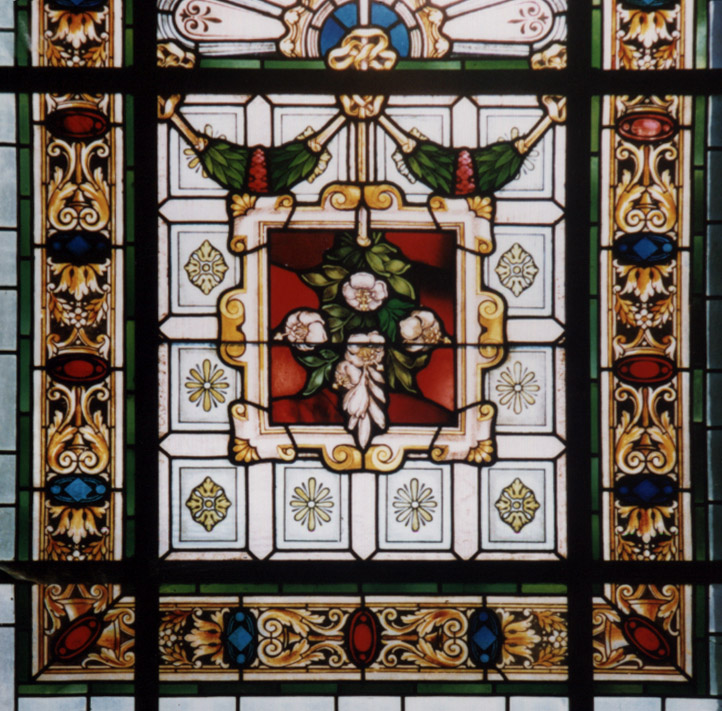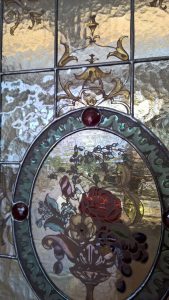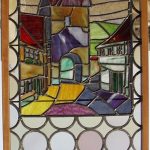
19 Jun LEAD BINDING: AN ANCIENT TECHNIQUE THAT NEEDS TIMELY RESTORATION TO MAINTAIN ITS BEAUTY.
Lead binding is a very ancient technique of medieval origin. It goes back to the first churches of Central Europe in which there were openings designed to allow the light to llet in. These openings have been, over time, closed with the placement of coloured glass. Initially, it was probably just pieces of stained glass to make sure that the light created a certain atmosphere inside the place of worship.
These pieces of glass were held together by lead rods which, I imagine, were welded or poured in place, so that they could hold the glasses together.
The evolution of this technique took place with the great gothic cathedrals in 1300-1500 always in Central Europe. Here in Italy, the Duomo of Milan is a magnificent example.
The technique of lead binding is closely linked to the technique of painting the glass with grisaille, earthy dusts that create shadows so that you can draw subjects and make iconoclastic representations.
 The grisaille, and therefore the figurative representation, becomes the protagonist in the stained glass. The technique of binding, however, is also fundamental to bring out the painted glass.
The grisaille, and therefore the figurative representation, becomes the protagonist in the stained glass. The technique of binding, however, is also fundamental to bring out the painted glass.
As for the Tiffany technique, there are dimensional limits, but also in this case they are related to the dimensions of the painted glasses, their shape and therefore the lead lines that can, in certain cases, cut the figures.
A balance is needed between the size of the painted subject and experience in working with glass and lead.
You must create something that gives the maximum aesthetic sense and, at the same time, the maximum safety on the glass.
The technique of lead binding is performed, today as before, with an “H” profile that limits and obliges to define the lines of interruption of the painted subject, precisely because it is made on glass. At the points where the lead joins, which intersect, welding of tin and zinc alloy to give rigidity. The latter is further obtained by means of iron rods that, positioned externally to the glass, then not on the side visible but on the back, drawing horizontal straight lines that begin and end on the frame containing the glass, are welded in the lead with copper wire which is knotted on the rod itself creating ties. If the latter were not present, lead, which is extremely malleable and deformed over time, would collapse from top to bottom under the weight of glass. Within a year, or even less, the stained glass window would collapse.

restauro di una vetrata con rilegatura a piombo – PRIMA Restoration of a stained glass window with lead binding – BEFORE
This technique therefore requires restoration over time. A restoration project we conducted was that of the roller windows of the apses of the church of San Nicolò in Treviso.
The roller windows are formed by mouth-blown glass discs and aligned in a linear design. In this type of geometric glass window, it is easier that, if the ligaments are consumed, the glass has an accordion effect, precisely because it consists of lines and not drawings that can, in a certain sense, better support the structure.
The restoration that we undertook was conservative and necessary because, since the post-war period, time had acted on the windows compromising their stability.

restauro di una vetrata con rilegatura a piombo – DOPO Restoration of a stained glass window with lead binding – AFTER
We tried to reuse, as much as possible, the existing material by restoring the broken glass, put back in safety the stained glass through the ligatures and renewed the lead where it had been consumed. Lead may sometimes become thin like a sheet of paper due to the weather.
In this restoration there were no grisaille but, if they had been there would have been a very delicate intervention. I remember a small example at the Abbey of Vedana, in Belluno. There the best solvent to be able to clean the windows turned out to be distilled water. In addition to this, there would also be the EDTA, but you need to be very competent in restoration before approaching it.

Restoration is a world of its own, and in some cases I have never gone beyond information. Either you immerse yourself in this reality or leave it to someone who knows how. Based on my experience I can choose whether to manage a restoration or not.
Vittorio Benvenuto